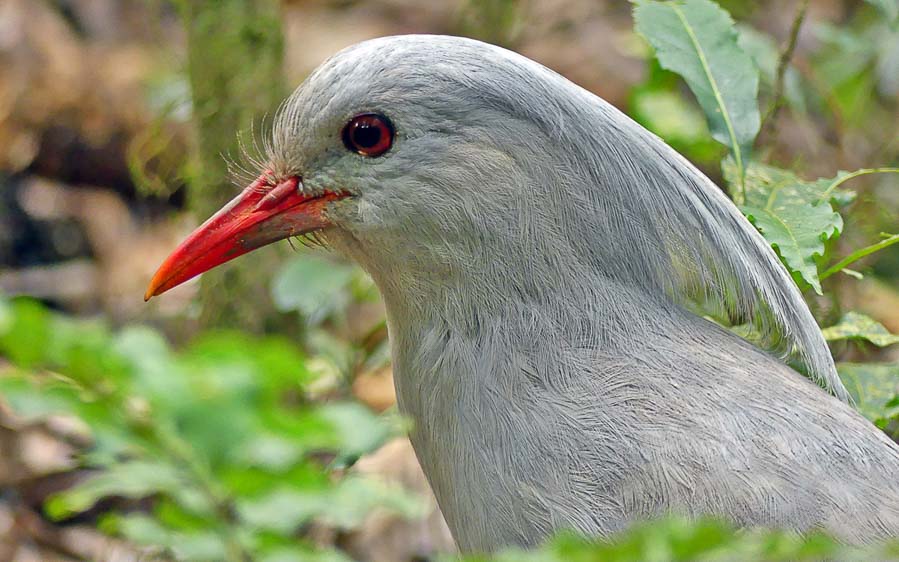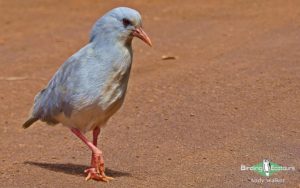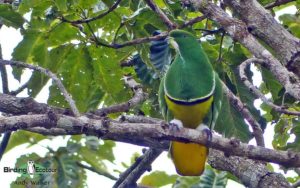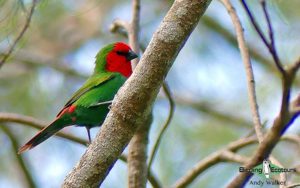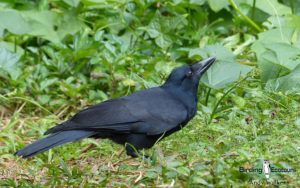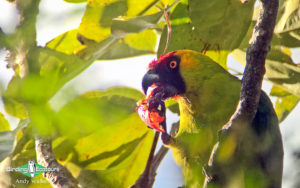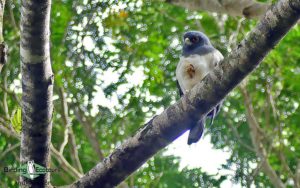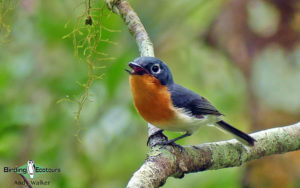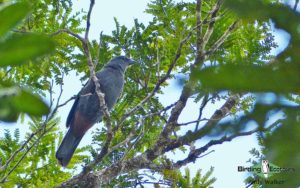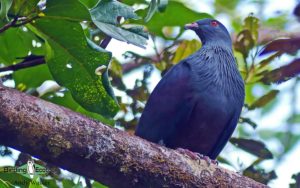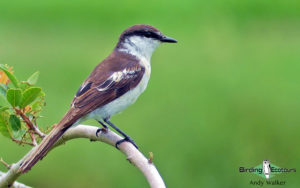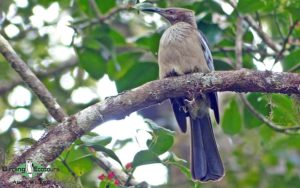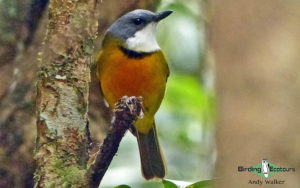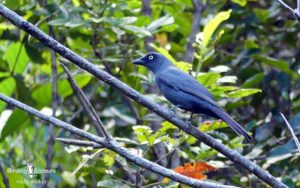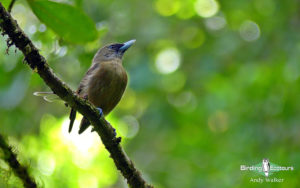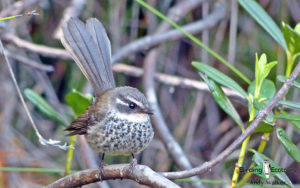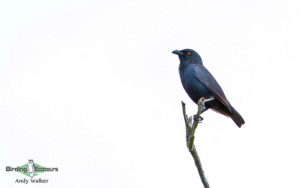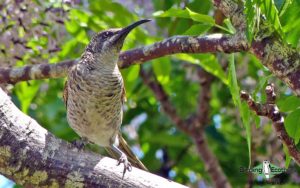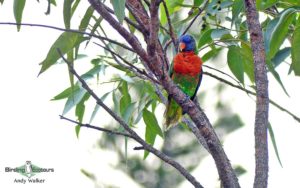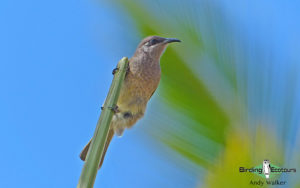New Caledonia Birding Tours
New Caledonia birding tours target most of the country’s bird endemics, with the star species being the most-wanted Kagu. Most of the birding on our New Caledonia birding tours is done on Grande Terre, however we can also visit the nearby islands of Lifou and Ouvea, which hold their own suite of island endemics. New Caledonia is a special collectivity of France in the southwest Pacific Ocean, 310 miles (500 kilometers) southwest of Vanuatu, about 750 miles (1,200 kilometers) east of Australia, and 775 miles (1,250 kilometers) north of New Zealand. New Caledonia consists of the main island of Grande Terre (where the capital city Noumea is located), along with the Loyalty Islands, the Chesterfield Islands, the Belep Archipelago, and the Isle of Pines. It is one of the best places to birdwatch in Melanesia, with some of the most sought-after birds in the world occurring.
Human presence in New Caledonia has been found to date back to 1600 BC to 500 AD and the Lapita period. The Lapita had influence over a large area of the Pacific after a wave of human expansion, ultimately thought to be from Taiwan, some 5,000 – 6,000 years ago. The first European to sight New Caledonia was British explorer Captain James Cook in 1774, he named it “New Caledonia” as it reminded him of Scotland (the old Latin name for Scotland, given by the Romans, was Caledonia). In 1853 France took formal possession of New Caledonia when it became a penal colony and in 1946 New Caledonia became an overseas territory.
Tropical New Caledonia, part of Zealandia, is of Gondwanan (super-continent) origin, along with nearby Australia, New Guinea, and New Zealand, with which it shares examples of similar flora and fauna, such as the Araucaria coniferous trees, which are also found in southern South America. It is thought that New Caledonia broke off Australia approximately 66 million years ago. The main island of Grande Terre (where we do most of our birding on our New Caledonia birding tours) is divided by a central mountain range with the highest peaks being Mont Panié (5,344 feet/1,629 meters) in the north and Mont Humboldt (5,308 feet/1,618 meters) in the southeast. Lush, mainly wet, evergreen forest vegetation cloaks the east while savannahs and farmland plains, which are drier, occur in the west. Botanically, New Caledonia is very important, with species, genera, families, and orders endemic to the islands, such as Amorella – the world’s oldest living lineage of flowering plants – occurring. Noumea sits on the edge of the New Caledonian Lagoon, one of the largest lagoons in the world, which is surrounded by the New Caledonian Barrier Reef.
Read More About New Caledonia
Following International Ornithological Congress (IOC) taxonomy, v14.1 (July 2024), the bird list of New Caledonia stands at 226 species. Of these, 28 are endemic birds, though four species, New Caledonian Nightjar, New Caledonian Owlet-nightjar, New Caledonian Rail, and New Caledonian Lorikeet, are now considered possibly extinct, and New Caledonian Buttonquail hasn’t been seen since the early 1900s. Another, the New Caledonian Storm Petrel is thought to be an endemic breeder, nesting on islands off Grande Terre and is the world’s most recently recognised seabird species, but is only seen extremely rarely on pelagic trips off the Australian coast. The majority of endemic birds are found on Grand Terre, though several are found on the Loyalty Islands (Large Lifou White-eye and Small Lifou White-eye on Lifou Island and Ouvea Parakeet on Ouvea Island). In the wake of recent IOC updates (July 2024), New Caledonia’s list of endemic species is set to increase. With the split of Island Thrush into more than 15 species, the New Caledonian Island Thrush is likely to become a new country endemic, however this species is rare and only appears to survive on small outlying islands.
Two of the most famous of New Caledonia’s endemics (both of which we normally see on our New Caledonia birding tours) are Kagu and New Caledonian Crow. Kagu (Cagou, locally) is a monotypic family (Rhynochetidae) and is incredibly unique – in terms of looks and voice (see image in gallery below), status (considered Endangered by BirdLife International), their inability to fly, and location (occurring only on an extremely remote island), all combining to make it one of the most desired birds in the world. Numbers dropped to less than 100 birds but have since recovered due to significant conservation efforts in their last remaining stronghold of Parc de la Rivière Bleue, though its survival is far from secure. New Caledonian Crow is famous due to its tool-making ability, which rival those of the advanced primates. They are extremely intelligent and their ability to fashion tools to solve problems (and forage) is extraordinary. It is not uncommon to see a New Caledonian Crow flying around with its favorite tool held firmly in its bill!
The additional extant endemics found on Grand Terre are Cloven-feathered Dove (one of the best-looking pigeons in the world), Goliath Imperial Pigeon (the world’s largest arboreal pigeon), White-bellied Goshawk, Horned Parakeet, New Caledonian Parakeet, Barred Honeyeater, New Caledonian Myzomela, New Caledonian Friarbird, New Caledonian Cuckooshrike, New Caledonian Whistler, New Caledonian Streaked Fantail, Yellow-bellied Flyrobin, Green-backed White-eye, Striated Starling, and Red-throated Parrotfinch. Two of the rarest/most difficult to observe of Grand Terre’s endemics are the Critically Endangered (BirdLife International) Crow Honeyeater and New Caledonian Thicketbird – a skulker in the extreme.
Furthermore, an interesting mix of Melanesian species occur on New Caledonia, such as Cardinal Myzomela, Grey-eared Honeyeater, South Melanesian Cuckooshrike, Long-tailed Triller, White-rumped Triller, Melanesian Whistler, Southern Shrikebill, and Melanesian Flycatcher. The region is also great for an interesting mix of seabirds and shorebirds.
New Caledonia includes the world’s largest living arboreal pigeon (as mentioned above) but also holds the world’s largest gecko, a huge skink, and the world’s tallest tree fern. It was also home to a giant prehistoric turtle and a giant flightless galliform (Sylviornis neocaledoniae) which measured 5.6 feet (1.7 meters) tall, all hinting at the ancient world that once occurred on this fascinating land, which still possesses a great alure. It is a fantastically biodiverse country and one of those must-see places for a thrilling birdwatching holiday, it really does feel like stepping back into a prehistoric world.
A bird-watching tour to New Caledonia is, nowadays, a fun experience with great hotels, even better food, and a good road network, making accessing the birding sites much easier and more enjoyable. Noumea can be reached by a relatively short flight from New Zealand or the Australian east coast (Sydney or Brisbane) and it is also a great destination to combine with some time relaxing – the island has some amazing beaches.
Download New Caledonia Itineraries
New Caledonia: Kagu & Other Endemics September 2025/August 2026
